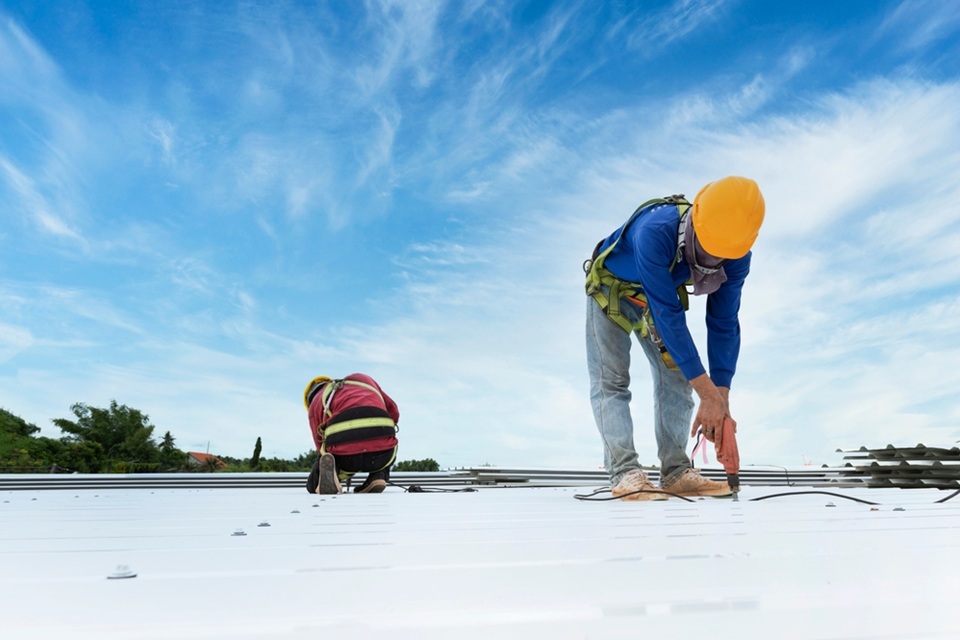
Smart Strategies For Maintaining Commercial Roofs: A Practical Guide
- General
- 31 December 2024
Key Takeaways:
- Comprehending various commercial roofing materials is crucial for making knowledgeable choices.
- The significance of routine inspections and upkeep in extending the life of a roof.
- The role of weather considerations in roofing maintenance planning.
- Exploring sustainable and energy-efficient roofing solutions.
Weather Factors You Cannot Ignore
Weather conditions are an inevitable factor that impacts the durability of commercial roofs. The effects of weather vary significantly depending on geographical locations—regions with heavy snowfalls and freezing temperatures present different challenges than those with scorching summer heat. Colorado commerical roofing CO is facing extreme weather conditions and requires materials and designs that accommodate these challenges to prevent damage. For instance, roofs with steep slopes and high-quality drainage systems in snowy areas can help mitigate snow loads and avoid water accumulation, a common cause of roof damage. Regular inspections help assess weather-induced damages, and timely maintenance actions, like clearing debris and ensuring proper sealing, guard against potential weather disasters.
The Power Of Regular Inspections
An essential yet often overlooked aspect of roof maintenance is routine inspections. These preventative inspections allow building owners and managers to spot potential issues before they escalate into significant problems. Regular inspections not only help in detecting leaks or structural weaknesses but also contribute to extending the roof’s lifespan. Consistent maintenance can save substantial sums by avoiding extensive repairs down the line. A planned maintenance approach is vital in optimizing the performance of a commercial roof. Adopting a systematic schedule for inspections ensures problems are caught early, protecting your investment and ensuring the safety of occupants.
Deciphering Roofing Materials
Numerous options are available in the market, such as TPO (Thermoplastic Olefin), EPDM (Ethylene Propylene Diene Monomer), and metal roofing, each with unique properties that can impact the building’s performance. TPO is renowned for its energy efficiency due to its reflective capabilities, which help reduce cooling costs during peak summer months. On the other hand, EPDM is a commendable choice in regions susceptible to harsh winters as it offers excellent resistance to cold temperatures and remains flexible during elongation. Metal roofing is notable for its resilience and minimal upkeep requirements, frequently enduring for decades with appropriate care. Companies provide valuable insights into selecting materials tailored to your specific environmental conditions and architectural needs.
Beyond Repairs: Sustainable Roofing Options
In a time when sustainability and environmental accountability are gaining more importance, investigating eco-friendly roofing options provides both ecological and financial advantages. Green roofs, featuring the placement of plants atop waterproof membranes, can significantly enhance insulation characteristics and mitigate the urban heat island effect by capturing and holding rainwater. This approach contributes to both energy efficiency and biodiversity. Reflective roof coatings are another sustainable option that deflects sunlight and reduces rooftop temperatures, lowering cooling demands and enhancing indoor comfort. Integrating these options can concurrently achieve energy savings and progress toward sustainability goals. Investing in innovative roofing solutions underscores a commitment to sustainability while optimizing building performance.
Steps To Implementing An Effective Maintenance Plan
- Conduct a thorough initial inspection: Begin by evaluating the roof’s condition in depth, paying close attention to weak points.
- Identify potential problem areas and make a checklist: Create a detailed inventory of vulnerabilities and prioritize repair tasks to prevent escalation.
- Schedule maintenance activities during predictable weather conditions: Plan key maintenance actions around the weather forecast to avoid unnecessary delays and ensure safety.
- Train staff on basic roofing maintenance practices: Equip team members with fundamental knowledge of roofing care to manage common issues and prevent minor problems from worsening.
- Document all inspections and repairs for future reference. Maintaining historical records of inspections and maintenance actions helps predict future needs and can streamline insurance claims.
Troubleshooting Common Roofing Problems
Like any roof, commercial roofs are susceptible to typical problems that jeopardize their effectiveness and longevity. Issues like leaks, ponding water, and membrane deterioration need swift action to curb profound implications. Leaks often stem from issues at joints or membrane punctures, which, if ignored, could lead to severe water damage and structural decay. Ponding water occurs when improper drainage systems allow water to pool for extended periods, which can stress roofing materials and lead to failure over time. Addressing these issues promptly ensures the continuity of operations and protects critical infrastructure. Employing a proactive approach to tackling common roofing issues is essential for maintaining the overall health of the building.
Balancing Budget & Quality
Financial considerations are crucial in deciding on commercial roofing projects. Opting for less expensive materials can be enticing, especially for large buildings, but this approach often needs to be revised in the long run. High-quality materials typically provide enhanced durability, better weather resistance, and lower maintenance costs, balancing upfront spending and overall lifecycle cost-effectiveness. By investing in superior-quality roofing solutions, building managers can ensure longevity and performance and accrue savings over time. It is essential to see these costs as long-term investments rather than immediate expenditures.
Innovative Technologies In Roofing
As technology advances, the methodologies for maintaining and inspecting commercial roofs continue to evolve. Innovations such as drone inspections offer a non-invasive means to assess the roof’s condition, providing high-resolution imagery and insights without the need to climb atop the building. Additionally, infrared thermal imaging has become a valuable tool in identifying hidden leaks and insulation issues, offering a deep-dive analysis into areas that are not easily visible to the naked eye.



